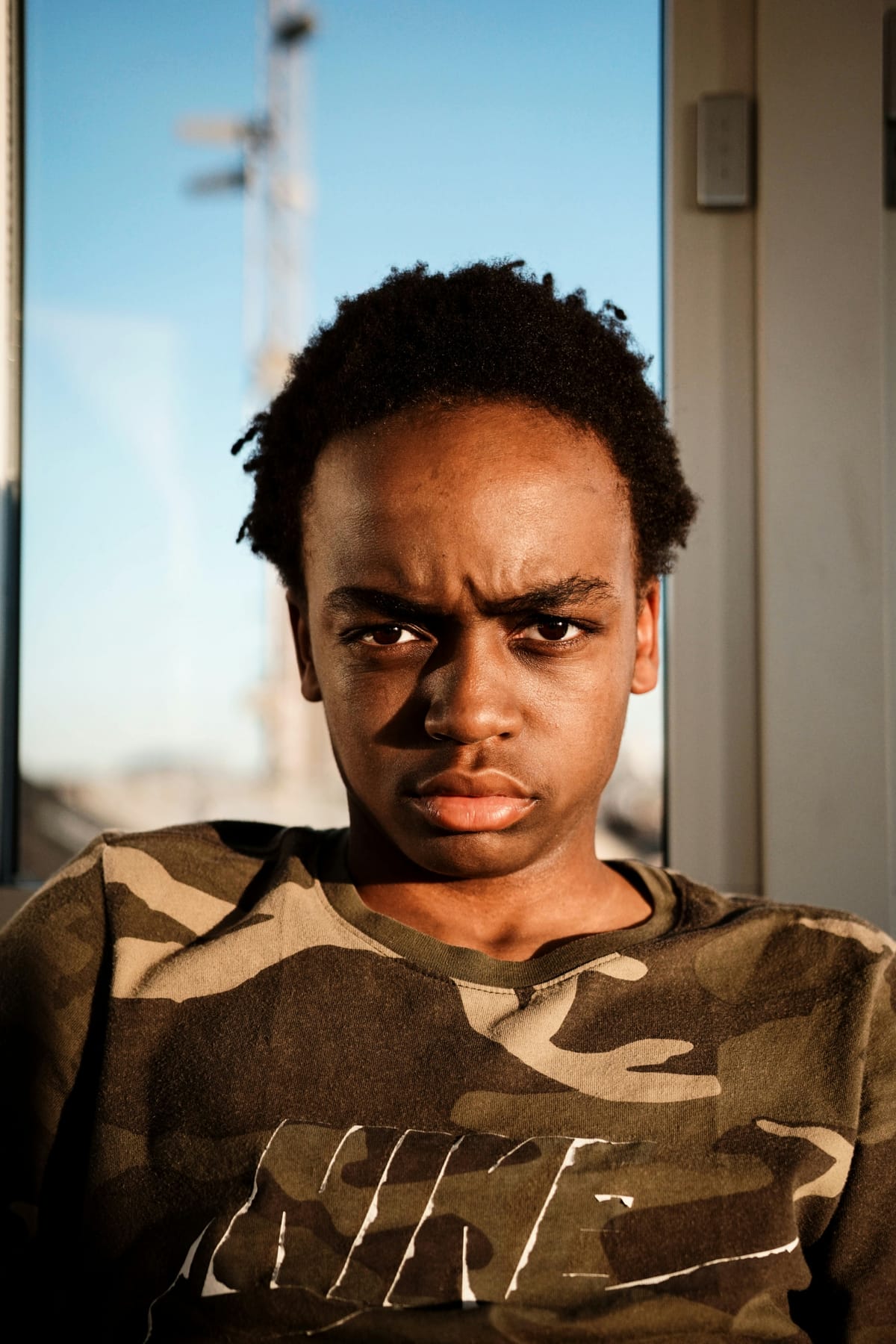He was not a monster after all...

May 2019. First sensory integration session with this adopted young man, aged 14 years.
I felt a knot tighten in my stomach as I read through his file before we met. The reports were troubling: violent outbursts toward his mum and female teachers, exclusion from school since January, and an inability to manage his emotions without them spilling over into either rage or total withdrawal. He'd shut down during his assessment with a senior therapist, refusing to speak or remove his hoodie, even when asked directly. This was a young man deeply guarded and wounded, and as much as I wanted to help, I knew the road ahead wouldn't be easy.
The door to the clinic's occupational therapy room opened, and he walked in, hoodie up, eyes down, hands shoved into his pockets. His posture screamed "stay away," but I greeted him with a gentle "Hi" and let the silence stretch comfortably, giving him space to feel the room.
For the first few sessions, it was mostly silence. He would sit in the corner, sometimes fidgeting, sometimes frozen. I didn’t push. I knew that forcing engagement would only reinforce the walls he’d built. But little by little, I saw glimpses of him peeking through — the way he would glance at me when I moved, the way his posture softened when we sat on the swing instead of at the table.
One day, I picked up the camera, pretended I was talking to my fantastic YouTube subscribers and started recording whilst I was setting up a sensory circuit/obstacle course including — swings, climbing frame, slide, scooter boards and shaving foam. I didn’t explain much, just laid them out and let him take the next step. At first, he ignored them. But after a minute, it was obvious he could not resist. I noticed him reach the first monkey bar swing doing a ling swing landing his feet on the platform swing and carried on with the rest stages of the obstacle course, like a Pro! I didn’t comment on it, just made a mental note.
Weeks passed. He still wasn't talking much, but something was shifting. The hoodie came off occasionally. He was less tense. And during one session, out of nowhere, he asked, "Why do we use this stuff?" He gestured to the sensory equipment, and it felt like a small breakthrough.
"It's to help you feel safe. Sometimes our bodies need something to focus on, to keep us grounded when things feel big," I explained calmly.
He grunted, not looking entirely convinced, but it was the first time he had responded to me directly. From that day on, he became more involved. Slowly, we introduced simple occupational therapy activities designed to build trust — not just between him and me, but trust in his own body and his ability to manage overwhelming sensations and emotions.
One day, during a particularly stressful session where I could tell something was bothering him, he blurted out, "I’m scared of going back to school."
I waited. "What scares you about it?"
"They hate me," he said quietly, barely above a whisper. "I mess everything up."
It was a breakthrough, and we spent the next few sessions unpacking those feelings, talking about his fears and the anger that came from feeling misunderstood. We also worked on sensory integration techniques that helped him manage his impulses, using calming strategies when he felt the anger building. Slowly, he learned to identify the physical signs in his body before his emotions took control.
In early 2020, just before the pandemic changed everything, he was ready to return to school part-time. His mother, too, was cautiously optimistic. She had been attending parent sessions, learning ways to support his sensory needs at home, and our work together was starting to show. There were still outbursts at home, but fewer. And when they happened, they didn’t escalate the way they used to.
I’ll never forget the day he came in after his first day back at school. He didn’t say much, but his face was different. There was a spark in his eyes. "It wasn’t as bad as I thought," he said.
His school agreed to integrate sensory breaks into his daily routine, and with time, he began to develop relationships with teachers who understood his needs. By the time he turned 15, he was attending full-time again. The violence had tapered off, and although he still had his moments of anger and frustration, he was learning to manage it with the tools we’d worked on.
His mother came to see me one afternoon in late 2021, her eyes filled with emotion. "He hugged me the other day," she said, tears in her eyes. "Not because he wanted something, just… because." It was a small moment, but one filled with so much meaning.
By the time he turned 16, this young man, who had once been so lost in anger and fear, had grown into someone who could face his challenges with resilience. He had built a toolkit — not just of sensory strategies but of emotional awareness and self-regulation. He was still a work in progress, as we all are, but he was no longer defined by the violence or the fear in his file.
He had found a way forward — and he wasn’t walking alone anymore.
